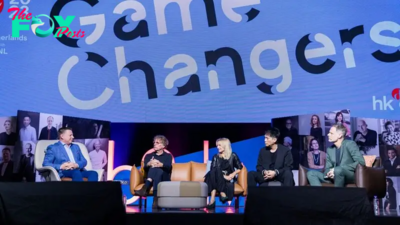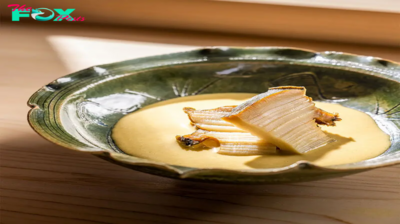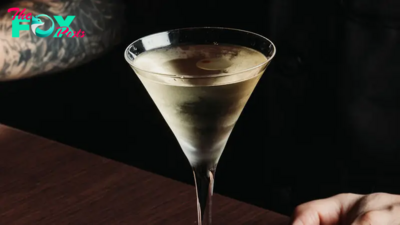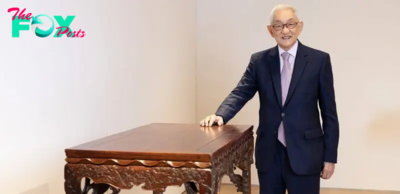Lifestyle
Californian Artist Lari Pittman’s ‘Magic Realism’
On the opening of his first major survey in Asia at Shanghai’s Long Museum West Bund, the Los Angeles-based artist Lari Pittman talks feminism, collecting habits and Ariana Grande.
Lari Pittman is to the Los Angeles art scene what the Hollywood sign is to its topography. For more than four decades, the 72-year-old artist, professor and mentor has been a cultural cornerstone in California, whose elaborate, kaleidoscopic and densely layered paintings have commented on everything from the Aids epidemic and LGBTQ rights to consumerism, capitalism and utopianism.
It was the Orange County Museum of Art’s then-chief curator, Paul Schimmel, who first spotted the twenty-something Pittman’s talent. Schimmel visited Pittman’s studio and said, “Love it, love it. Let’s do it,” with no reservations. Thus, Pittman’s first-ever exhibition was a solo museum show before he even had gallery representation. “It gave me a leg up,” recalls Pittman. “I’ve had a very privileged career and I don’t take it for granted.”

It’s true that Pittman has achieved the kind of longevity as an artist that others can only dream of. A steady presence at art fairs, museums and galleries ever since – he counts shows at The Whitney and Venice Biennale on his CV – his works are also held in collections such as Seoul’s Amore Pacific Museum and New York’s Museum of Modern Art.
The past few years have given the artist the opportunity to show his works in numerous cultural environments. In 2019, the Hammer Museum in Los Angeles staged a major retrospective, Lari Pittman: Declaration of Independence, comprising 80 paintings and 50 works on paper, which later Travelled to Mexico City’s Museo Jumex. And last month the artist’s first museum survey in Asia, Magic Realism, opened at Shanghai’s Long Museum West Bund.
“What I’m most interested in is to see what I call how work Travels,” explains Pittman on the show’s opening day. “I’ve lived all my adult life in Los Angeles; I know what the work looks like here and what discourse it can produce. But then what does the work look like in another cultural context? So, in this case, what does it look like in China, and what do people see? What does it pick up? And what does it leave behind?”
Curated by Rochelle Steiner, Magic Realism brings together 30 works from six series, spanning the last 12 years of Pittman’s career, including his two most recent series created during the pandemic, Luminous: Cities with Egg Monuments (2022) and Sparkling City With Egg Monuments (2023). The show highlights his exploration of themes related to modern life, including regeneration and optimistic renewal in 21st century society, as well as the artist’s rich and varied inspirations – which span Queen Victoria’s mourning jewellery to 19th-century futuristic architects and Mexican retablos. Alongside works from Pittman’s personal archive, pieces from the museum’s permanent collection are also on display, acquired by the owners, the husband-and-wife mega collectors, Liu Yiqian and Wang Wei – an impressive total of six.
Installation view: Lari Pittman, Magic Realism at the Long Museum (West Bund), Shanghai, 2024 (Image: Shaunley)
So how has the artist faired reflecting on his significant body of work? “To be honest with you, the first thing is that I’m relieved I’m not embarrassed by them; I’m actually very proud of the work I did when I was younger. It’s been a very helpful exercise to study the work as if it weren’t mine, so I’m looking at it through almost an objective lens and not a subjective lens. And that, to me, is really important.”
Magic Realism is Pittman’s second Asian solo show. In 2022, he was chosen to christen Lehmann Maupin’s 2,600-square-foot gallery in Hannam-dong, Seoul, with its opening exhibition Opaque, Translucent and Luminous. As David Maupin, who’s represented the artist since 2019, explains, “There’s a large connection between Asia and California; it’s very east-facing.
“The DNA of Lehmann Maupin is that great art can happen anywhere. We’re interested in artists who invent a language that comes from a very personal place. With Lari, being Columbian and American, his invention of visual language very much comes from being bilingual and being from two places at once.”
Born in Los Angeles to a Columbian mother and American father, Pittman grew up speaking Spanish and English, and lived in Columbia until early teens. “Latino culture is so different from Anglo-Saxon or Protestant culture. There’s joy and happiness that’s real,” he says. Raised in a family that was “fundamentally a matriarchy” (his mother had four sisters), Pittman recalls always being supported by his parents. “They knew they had an eccentric child, but my love of decoration and those kinds of impulses were never squashed, which is quite rare for someone of my generation.”
After returning to the US, Pittman attended the California Institute of the Arts and enrolled in the Feminist Art Program, “the cornerstone of my feminist upbringing,” he says. “My teachers, male and female, were all feminists, so that really changed how I thought about what work could be. We also looked at what’s missing in art History, which is usually women, people of colour, and different ideas of gender and sexuality. It was such an eye-opener to me then in my early twenties.”
Magic Realism shows a continuation and evolution of the artist’s feminist vein through the reoccurring visual motif of the egg, which is seen throughout the show. “The role of the egg has been very mobile in its meaning over the last years,” explains Pittman. “In the earlier paintings, it’s showing as an embryo, so it’s a birthplace in a way. But over the years, it’s shifted to be a meaning of potential, promise and a certain hopefulness.”
In the second room of the show is the exhibit’s highlight, the 10-metre-long Sparkling City With Egg Monuments (2022), which occupies the full right-side wall and contemplates a rethinking of the patriarchy. Comprising five panels, the decorative, dazzling, jam-packed painting presents a utopian vision of a city of the future by depicting an interconnected web of skyscrapers, buildings and bridges, interspersed with egg monuments. “Instead of building monuments to warriors or commemorating war or any kind of patriarchal imagery in these new cities, we would instead erect the egg, which is a metaphor for potentiality,” Pittman explains.

How does the artist think his works will resonate with inhabitants of another metropolis, Shanghai, who might not be familiar with it? “I think the work comes to you already speaking and being just very gregarious and very generous in its visual prompts. I think there are enough clues and cues here for anybody to start unpacking it and start responding to what they’re looking at, and hopefully invite them to overlay their own personal narrative on to the work as well.”
We’re constantly told that artists are meant to provide answers, but for Pittman, “there’s no ETA or destination of meaning” is central to his work. As Maupin explains, “Magic Realism relates to the fact that there’s symbology in the paintings; there are real things we can all relate to, such as birth and regeneration; however, they’re abstract, there’s not a linear meaning. There’s really a part where you have to suspend trying to understand it. It’s about letting yourself go on this subconscious journey and coming away with a feeling. It’s more like music; you have to let in the emotion and kind of be surrounded by it.”
A similar logic might be applied when trying to comprehend Pittman’s working process. Despite such densely layered complexity, he doesn’t draw on the canvas ahead of time. And though he makes larger-than-life paintings, the 165cm-tall Pittman works without any assistants. “If there’s a practice that doesn’t fare well when done by a committee, that’s painting. I always got the best results by doing it myself.” Occasionally, a visitor to his studio won’t believe him. His riposte? “I don’t do prêt-à-porter, I do couture,” he says rather fabulously.

Today Pittman continues to live and work in Los Angeles with his partner in a three-storey 1930s cottage in Los Feliz, which was recently photographed by Elle Décor. He’s an avid art collector – “hoarding might be a better term,” he says of his addiction to collecting a broad range of artists, from 20th-century Latin American to the Korean LA-based painter Hannah Hurr. “I’m always a bit in debt,” he jokes.
Does he ever find it hard to let go of his own paintings? “I don’t live in the past. I live in the near future. So once I’m done with a body of work, it sounds a little bit like Ariana Grande, but yes, thank you, next.” He’s especially proud to count numerous collectors who’ve bought his paintings in depth over the years. “That means they’re following your work, and it’s not just a one-off; they think it’s worth continuing investing in and committing to.”
But he’s most humbled by being inspiration to a faNBAse of thirty-something painters. “Quite often I hear young kids in interviews say how my work has been inspirational to them, and I’m always really touched by that. And it’s a faNBAse who are in their early thirties, so it’s a 40-year difference. I love that the work still feels contemporary to them and not just historic, which means they’re keeping you alive and you still might have some street cred.”
(Hero Image: Curiosities from a Late Western Impaerium (Hammer Museum 2019) 2014, Lari Pittman, courtesy of Lehmann Maupin, New York and Seoul)
-
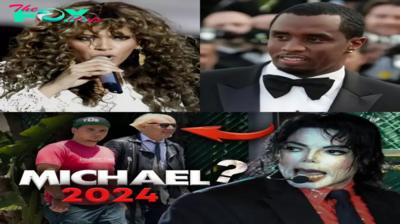
 Lifestyle46m ago
Lifestyle46m agoSHOCKING NEWS: Beyoncé Claims Diddy Hid Michael Jackson, Who Faked His Death With Video Evidence to Prove the King of Pop Is Alive and Living in Diddys Mansion.cau
-

 Lifestyle46m ago
Lifestyle46m agoOMG IT HAPPENED ! Jamie Foxx Finally Speaks About P Diddy Rumors! Today im gonna say it all! In 2023 he almost k*lled me because i refused to.cau
-
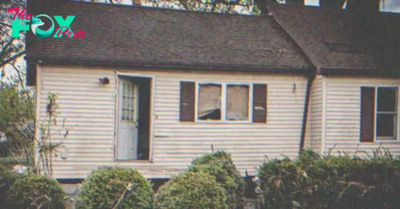
 Lifestyle1h ago
Lifestyle1h agoSon Who Didn’t Visit His Mother for Years Comes and Sees Her House Destroyed – Story of the Day
-
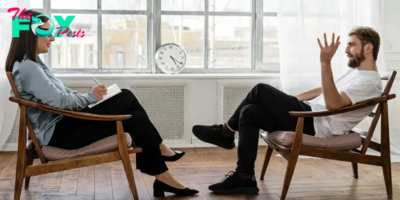
 Lifestyle1h ago
Lifestyle1h agoMy Therapy Client Is Angry His Wife Won’t Let Him Take Care of Their Son and I Was Shocked When I Found out Why — Story of the Day
-
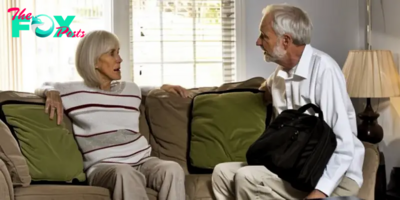
 Lifestyle1h ago
Lifestyle1h agoMy Greedy In-Laws Tried to Get Rid of Our Sick Mom, but She Brilliantly Taught Them a Lesson
-

 Lifestyle1h ago
Lifestyle1h agoMy Entitled Parents Demanded That I Give Them My New House — My In-Laws Suddenly Stood up for Me
-

 Lifestyle2h ago
Lifestyle2h agoWATCH: Vivek Oberoi gifts expensive car to his father | The Express Tribune
-

 Lifestyle2h ago
Lifestyle2h agoSohail Ahmed praises Diljit Dosanjh’s admiration for Nusrat Fateh Ali Khan | The Express Tribune






